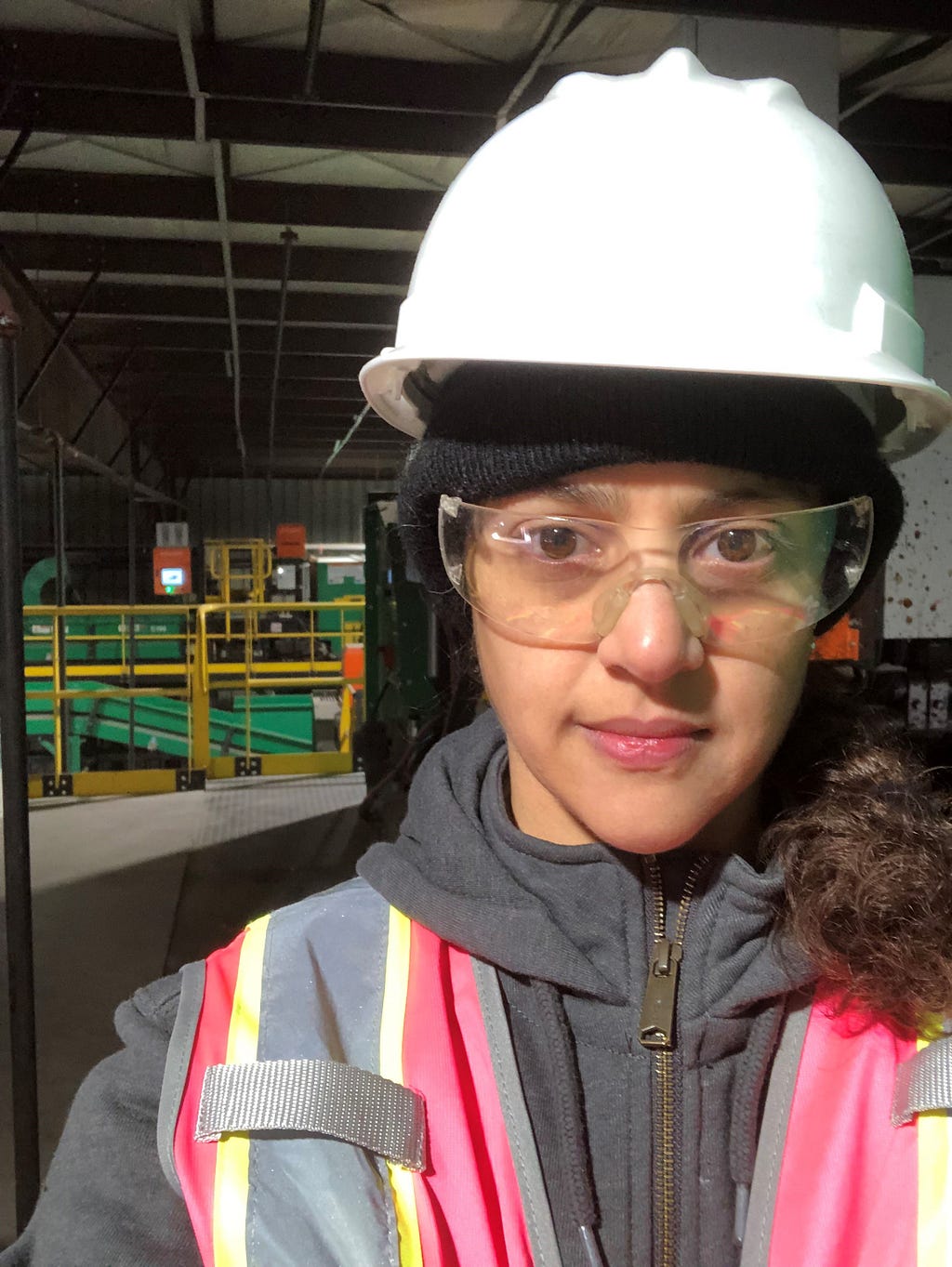Marisa Adler Of Resource Recycling Systems On Why They Are Embracing Slow Fashion and Renewable Consumption
An Interview With Monica Sanders
Companywide buy-in. Slow fashion brands integrate sustainability and intentionality into every aspect of business — every department, every function, every job. Create the culture and empower staff.
As ‘slow fashion’ grows in popularity, more fashion companies are jumping on the bandwagon. Renewable consumption has been gaining popularity for a while, as people recognize its importance, and many fashion companies want to be a part of this change. In this interview series, we are talking to business leaders in the fashion industry to discuss why they are embracing slow fashion and renewable consumption. As a part of this series, I had the distinct pleasure of interviewing Marisa Adler.
Marisa Adler is a Senior Consultant with Resource Recycling Systems (RRS) where she leads RRS’s textile circularity practice. Prior to joining RRS, Marisa led waste reduction policy and programming for the NYC Department of Sanitation and received degrees in Natural Resource Management and Conservation from Cornell University and Antioch New England Graduate School. Marisa serves on the Board of Directors for the Secondary Materials and Recycled Textiles (SMART) Association and on the advisory board of circular textile startup Crite Corp.
Thank you so much for doing this with us! Before we dig in, our readers would like to get to know you a bit more. Can you tell us a bit about your childhood “backstory”?
I grew up in Norther Westchester County, NY garage-saling, thrifting, and trash picking with my dad. I remember scouring the Pennysaver every week circling estate sale listings and assembling our Saturday itinerary. My dad would scout the sales on Fridays while I was at school (because every good sale starts on a Friday) and we’d return to them together on Saturdays. We crisscrossed the backroads of Westchester and toured many houses in our garage sale travels. We bought tools, clothing, shoes, accessories, clocks, collectibles — anything and everything, even if (especially if) it needed repair; clocks were a particular weakness of ours. Trash-picking was another major hobby of ours that intensified as time went on. My dad memorized the bulk trash schedule and we drove around hunting for finds. This was my first glimpse into our waste (and overconsumption) problem.
Can you tell us the story about what led you to this particular career path?
My love of discards combined with my love of nature eventually led me to study Natural Resource Management and Conservation at Cornell University and then at Antioch New England Graduate School. My goal was to work in a field that reduced people’s impact on ecosystems and natural habitats through responsible materials management. After grad school, I took a job with the NYC Department of Sanitation where I was convinced I’d initiate the development of free citywide reuse centers. This did not happen. I very quickly learned how city government works. After eight gloriously frustrating yet rewarding years in city government I landed at boutique recycling and sustainability consulting firm RRS where I work currently on purpose-driven projects to advance the circular economy.
Can you share the most interesting story that happened to you since you began your career?
The most interesting part of my career is the here and now. I’m working to advance textile circularity through end-of-life recovery. It is incredibly energizing and exciting and the industry is on the precipice of real change. I am fortunate that RRS supported the development of a report on textile waste and recovery in the U.S. in 2019, which has served as a foundation of our textiles work. I am particularly passionate about creating scalable systems for the collection and sorting of textiles and I hope to accomplish this through the development of advanced textile sorting and the adoption of supportive policy to even the playing field, unlock investment, and catalyze private sector action.
You are a successful business leader. Which three character traits do you think were most instrumental to your success? Can you please share a story or example for each?
- An affinity for collaboration. I really enjoy the brilliance that results when people work together. The team at RRS is full of dedicated and invested individuals, and it certainly doesn’t hurt that they are boatloads smarter than me. In addition, because textile circularity is a systems-level issue and a rapidly evolving field, industry collaboration is essential. Making progress in this area requires a willingness to share information, build trust, and share risks and rewards.
- Passion. My passion for sustainability keeps me going day in and day out. It has helped me guide me toward the clients, projects, and people with which I have built my career and my passion helps me navigate through challenges and setbacks. I also believe there’s a strong link between passion and authenticity, which is important in building trust, earning respect, and modeling leadership.
- Humility. Knowing my own weaknesses pushes me to pursue continuous self-improvement. It also allows me to lean on others for support. I really value diversity of views, experiences, and capabilities…which relates directly back to the importance of teamwork and collaboration.
What do you think makes your company stand out? Can you share a story?
RRS is a purpose-driven consulting firm. Aside from snagging the URL recycle.com, the company has decades of experience implementing and evolving recovery programs across material types for a wide range of public and private sector clients. To me, RRS is unique because of the culture and passion that makes up our backbone and because of our matrixed structure that recognizes the value and voice of every team member. We are an organization of future-thinkers and optimistic problem solvers. We seek to push boundaries and take on clients and projects that can advance the journey to circularity.
Who is your fashion hero or heroine? Why?
I admire everyone and anyone who chooses to wear secondhand over new.
What are three things we should all know about “slow fashion”?
- The less we use, the more we save — water, resources, energy, materials, work/life balance.
- Slow leads to better quality — more time and attention on the product details that count.
- Slow leads to increased transparency — a better flow of information through less complex supply chains.
Can you please explain how it can be fashionable to buy less, wait a little longer, or even repair clothing?
Being fashionable is a mindset and an attitude, so it should be achievable to express with clothing you already have.

Thank you for all that. Here is the main question of our interview. What are your “5 Things You Need To Lead a Successful Slow Fashion Brand”.
- A willingness to collaborate. No brand can solve the textile waste crisis alone. We all exist in a system larger than ourselves — the global economy. Pursuing systems change (e.g., shifting consumer mindsets, exploring new business models, building new recovery infrastructure) requires intentional collaboration and pooling of resources. It means leveling the playing field and engaging across sectors (public/private) to build solutions.
- An understanding of what sustainable and circular mean to your brand. There are many ways a brand can become more sustainable and circular. How will your company engage on circularity and slow fashion? What internal and external goals will your company set? Do you have a roadmap, metrics, milestones, tools, and resources? What is your process for continuous evolution and adapting to change?
- Companywide buy-in. Slow fashion brands integrate sustainability and intentionality into every aspect of business — every department, every function, every job. Create the culture and empower staff.
- Upstream visibility. Data is critical. Knowing your full network of suppliers, where your products and product components are produced, who makes them, what’s in them (down to the last fiber/chemical/dye) empowers your brand to effectively create change, confidently communicate to consumers, and accurately participate in the larger systems-level conversation.
- Downstream visibility. Brands need to begin understanding and tracking what happens to their products at end of life and mapping the gaps (gaps in knowledge and/or circular solutions). If they haven’t already, brands should begin collecting data on post-consumer use. How long do consumers use the product? Why do they get rid of it? What do they do with it once they no longer want it? Who handles the unwanted products and where do the products end up? This information will create a feedback loop that can be used to inform upstream design and material choices as well as the value proposition for alternative business models.
You are a person of great influence. If you could start a movement that would bring the most amount of good to the most amount of people, what would that be? You never know what your idea can trigger. 🙂
I recently listened to an inspiring Ted Talk by a highly esteemed colleague, Gregory Norris, who introduced the concept of handprints and save waves. Handprints and save waves are the “positive” counterpoint to footprints and ripple effects. If I could create a save wave, I would encourage everyone to adopt the practice of conscious consumption as one of their handprints. Conscious consumption means making informed and purposeful choices about the products we buy based on the social, environmental, and economic impacts. It’s so true that we vote with our dollar.
How can our readers further follow your work online?
Check out our work on https://recycle.com/ and look for posts on LinkedIn: https://www.linkedin.com/company/resource-recycling-systems
Thank you for these fantastic insights. We greatly appreciate the time you spent on this.
About the Interviewer: Monica Sanders JD, LL.M, is the founder of “The Undivide Project”, an organization dedicated to creating climate resilience in underserved communities using good tech and the power of the Internet. She holds faculty roles at the Georgetown University Law Center and the Tulane University Disaster Resilience Leadership Academy. Professor Sanders also serves on several UN agency working groups. As an attorney, Monica has held senior roles in all three branches of government, private industry, and nonprofits. In her previous life, she was a journalist for seven years and the recipient of several awards, including an Emmy. Now the New Orleans native spends her time in solidarity with and championing change for those on the frontlines of climate change and digital divestment. Learn more about how to join her at: www.theundivideproject.org.
Marisa Adler Of Resource Recycling Systems On Why They Are Embracing Slow Fashion and Renewable… was originally published in Authority Magazine on Medium, where people are continuing the conversation by highlighting and responding to this story.


